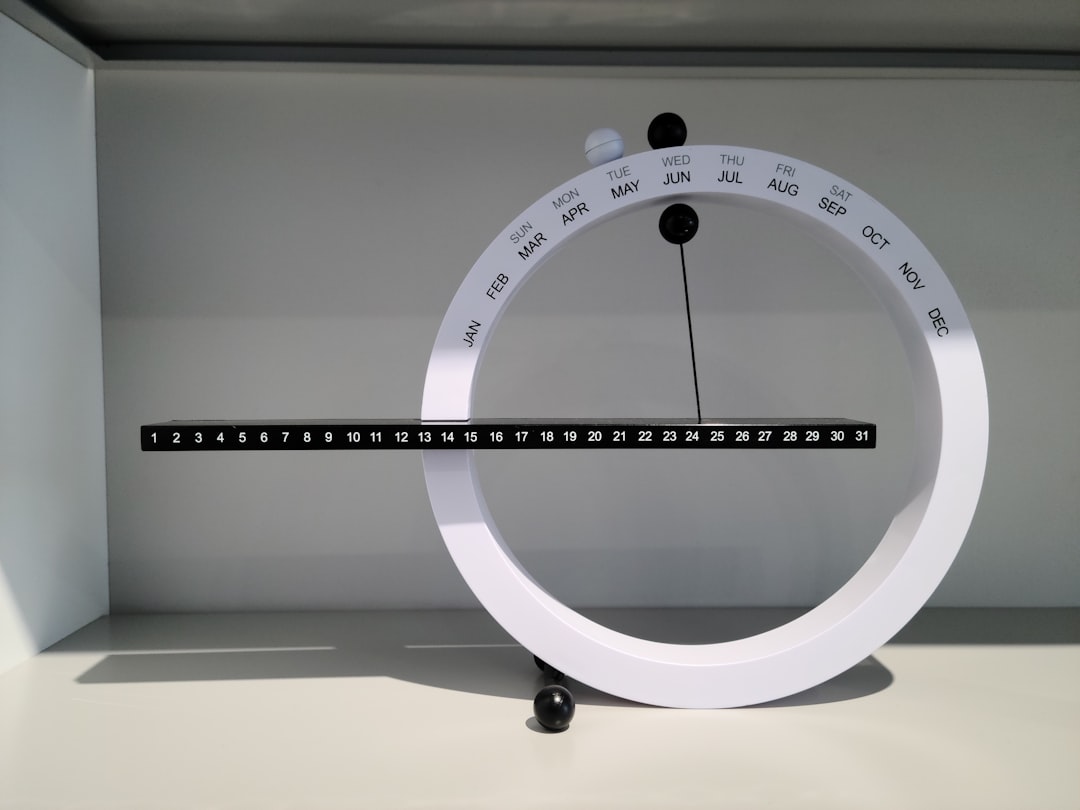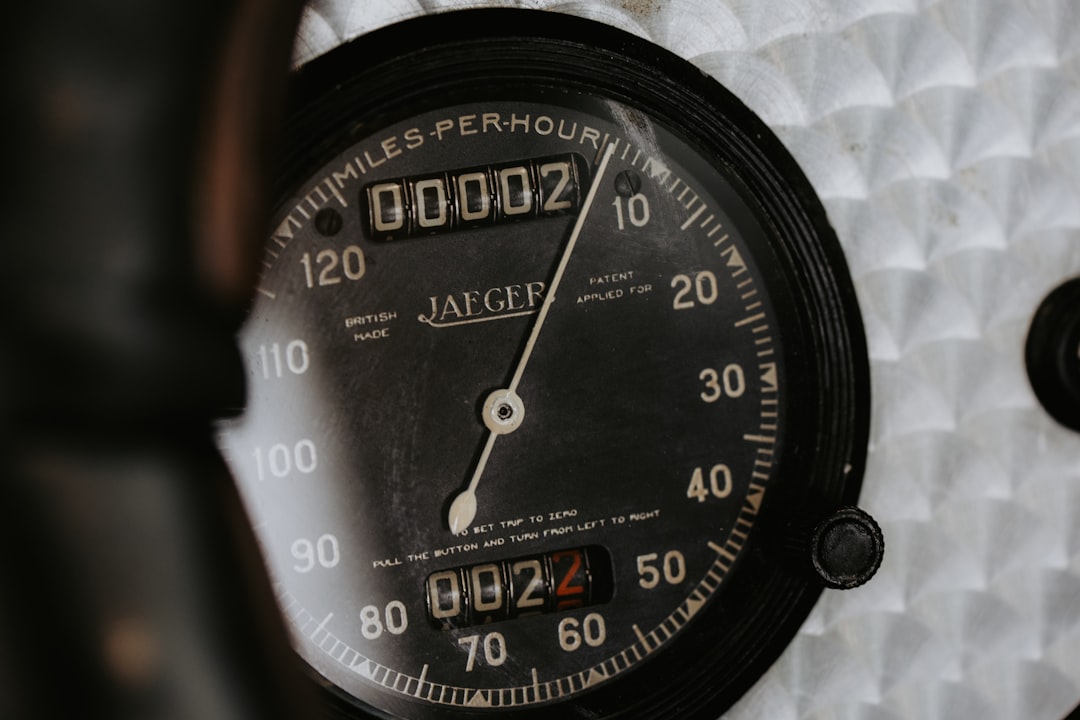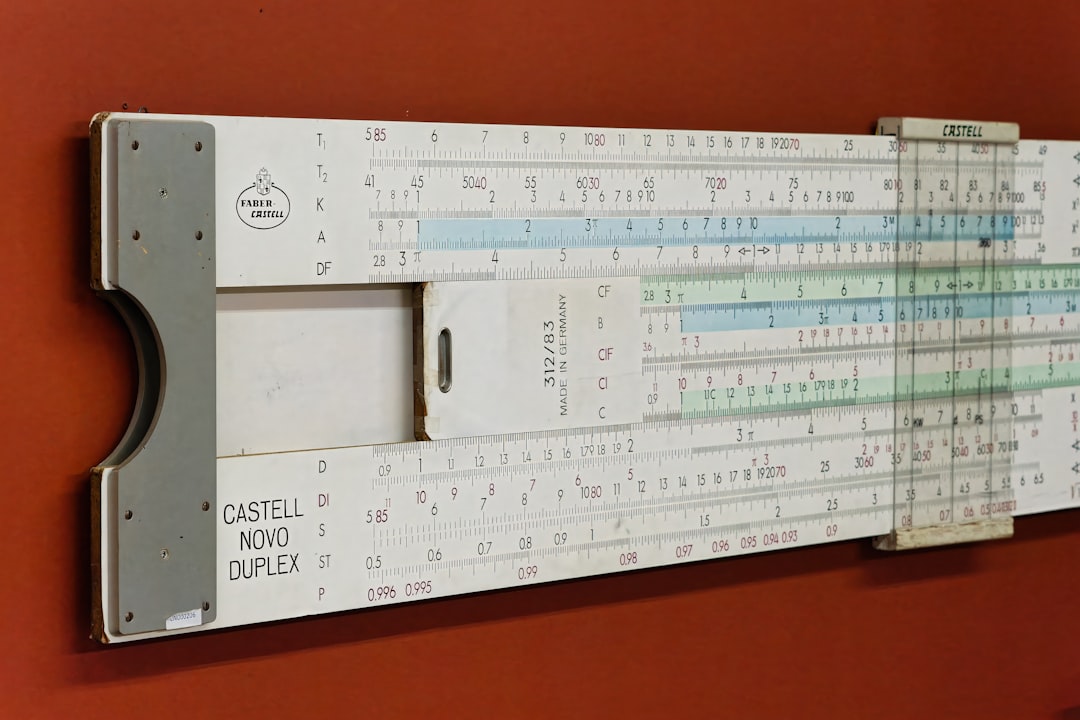

Engage prospects with a scan and streamline customer engagement with FREE QR code marketing tools by Sona – no strings attached!
Create a Free QR CodeFree consultation

No commitment

Engage prospects with a scan and streamline customer engagement with FREE QR code marketing tools by Sona – no strings attached!
Create a Free QR CodeFree consultation

No commitment
QR codes have rapidly evolved into a strategic solution for bridging offline engagement with online action in today's digital landscape. For tachometer suppliers, QR codes provide an efficient and frictionless way to drive lead generation, increase quote requests, and streamline product education without app downloads or complicated setups. The result is faster access to the right information and a measurable pipeline from traditionally analog moments, such as trade show demos, packaging, or maintenance labels.
Tachometer manufacturers, distributors, and resellers face intense competition and rising expectations regarding product discovery, technical support, and compliance documentation. Yet, sales and marketing teams often miss high-value prospects because critical interactions are not captured in the CRM, and engagement signals are lost within outdated, analog workflows. Traditional processes such as printed brochures, manual inquiry forms, and static product guides can create barriers that delay the buying journey and obscure the identities of genuinely interested buyers.
By enabling instant and measurable access to product datasheets, regulatory certifications, and digital catalogs directly from physical marketing materials or packaging, QR codes empower tachometer suppliers to translate interest into action. They also uncover hidden buyer signals and capture valuable data for more intelligent follow-up, ensuring that fewer qualified opportunities slip through the cracks. With the right platform, each scan becomes a signal that drives account identification, prioritization, and revenue attribution.

QR codes bridge the gap between physical touchpoints and digital outcomes, making it easier to drive quote requests, trigger content downloads, and capture inbound leads from RPM measurement devices, brochures, or trade show displays. Major challenges include missing high-intent prospects who read product details but do not submit inquiries, and lacking visibility into which companies are scanning your catalogs at live events. When QR codes are embedded into packaging, calibration stickers, and booth signage, each interaction can be captured, enriched, and routed for timely follow-up.
Here’s how tachometer suppliers can overcome these obstacles and achieve effective lead capture and product access. Focus on building clear paths from scan to action, while ensuring that tracking, consent, and CRM syncing are embedded from day one.
These steps replace bottlenecks such as paper forms or static flyers that slow response and result in missed opportunities for follow-up. Modern platforms support every layer, from code generation to journey mapping and attribution, and help prioritize the best-fit prospects. Sona QR can manage dynamic codes, consolidate performance analytics, and sync audiences with your CRM so your team always works from accurate, real-time data.
Legacy analog tactics often hide buyer intent and create friction. By converting these moments into scannable interactions, tachometer suppliers can capture intent in real time and deliver value in seconds.
A unified platform standardizes these transformations across teams and regions. Tachometer sales, marketing, and support can act on every qualified signal, use consistent templates, and reduce the risk of untracked prospects. Over time, these small improvements compound into higher conversion rates, lower cost per lead, and greater clarity on which channels deliver profitable demand.

Tachometer suppliers and RPM measurement device vendors confront a set of repeatable challenges that QR codes are uniquely equipped to solve. From surfacing intent and reducing friction to improving documentation accuracy, QR enables real-time engagement from any physical touchpoint.
For tachometer suppliers, these capabilities apply across trade show signage, product sleeves, calibration stickers, invoices, and shipping documents. Every physical asset that carries a QR code becomes a measurable opportunity, reducing blind spots and converting analog curiosity into digital engagement.

Selecting the right QR format is essential for matching intent, context, and desired outcomes. Tachometer suppliers rely on a mix of technical assets, service workflows, and sales touchpoints that benefit from tailored formats and destinations.
Dynamic QR codes are especially valuable for this vertical. They allow suppliers to update resources after printing, localize content by market or distributor, and personalize experiences by sector, such as automotive or aerospace. Platforms like Sona QR centralize management and analytics so you can track performance, run experiments, and maintain content integrity over time.
Growth comes from placing QR codes at the intersection of physical and digital journeys. Tachometer buyers engage with your brand in labs, on plant floors, at events, and through printed collateral. QR codes convert these moments into measurable demand and make it easier to attribute outcomes to channels and campaigns.
By embedding QR codes across these placements, tachometer suppliers build segmented audiences that were once invisible in analog channels. Sales teams gain clarity on who engaged, with what content, and at what time, enabling targeted outreach with higher win rates.
QR codes help tachometer suppliers translate offline engagement into data-backed action. The following use cases align with common buyer workflows and deliver measurable outcomes.
Strategic placement across the lifecycle ensures that each scan ties to a meaningful action. You not only meet the buyer’s need in the moment but also gather segmentation signals for smarter nurturing and conversion.
Every scan carries context that can power precise retargeting. By assigning different QR codes to specific journeys and materials, tachometer suppliers can automatically segment audiences based on intent, timing, and channel. This approach supports account-based strategies and enables Intent-Driven Retargeting so high-value buyers receive relevant follow-up without guesswork.
Start by mapping key stages and identifying the physical assets in each stage. Awareness-stage scans may come from event signage or print ads, consideration-stage scans from product brochures or demo units, and conversion-stage scans from pricing sheets or pilot trial kits. Each code becomes a unique entry point that tells you what the prospect needs next.
With a platform like Sona QR, every code can include metadata for segmenting and routing. As scans accumulate, your audience models gain depth, making it easier to predict purchase readiness and activate relevant content at the right time.
Tachometer buyer journeys are fragmented across print, events, partner channels, and digital media. QR codes unify these touchpoints by turning each physical interaction into a measurable digital step, enabling faster engagement and stronger attribution across the funnel.
When aligned with your campaigns, QR codes help your team see which materials perform, how prospects progress, and where to invest budget. This reduces wasted spend, improves message-market fit, and ensures sales receives the most qualified leads from each channel.
A centralized platform like Sona QR manages codes across channels, tracks performance in real time, and syncs scan data with your CRM and ad platforms. This creates a closed-loop system where insights directly improve your next campaign.
Start by identifying the workflow gaps that most affect pipeline and customer experience. For tachometer suppliers, common pain points include lost tradeshow leads, poor visibility into which datasheets are driving interest, and low adoption of warranty registration or calibration scheduling. Selecting a single high-impact use case keeps the initial rollout focused and measurable.
Define the business outcome you want to achieve and the audience you aim to influence. For example, your goal might be to increase quote requests from plant maintenance managers by linking demo units to a guided quote form. Or you may want to reduce support tickets by giving quality teams instant access to calibration certificates via QR codes on invoices and packing slips.
Choose between static and dynamic QR codes based on the stability of your destination and your need for analytics. Static codes point to a fixed URL that cannot be changed after printing. Dynamic codes allow you to update destinations, run A/B tests, and view performance data without reprinting materials.
For most tachometer supplier use cases, dynamic codes are the better choice. You gain flexibility for content updates, localization, and attribution. This is crucial when materials circulate through distributors and events where reprints are costly and slow.
Design matters as much as placement. Incorporate your branding, add a concise call to action, and frame the code to stand out on the page or device. Make sure color contrast is high and leave quiet space around the code to avoid scanning issues.
Before deployment, test at different sizes and distances. Scan the codes under typical lighting conditions found on the shop floor, at trade shows, and in warehouses. Validate that the destination loads quickly on mobile and that forms are short, accessible, and localized if needed. For creative inspiration, browse QR marketing images.
Start creating QR codes for free at SQR.me.
Roll out QR codes where you are most likely losing leads or missing signals. For tachometer suppliers, that often includes event booths, demo units, packaging inserts, invoices, product sleeves, and distributor displays. Use unique codes per placement so you can attribute performance and refine going forward.
Coordinate with partners and field teams to ensure consistent placement and messaging. Provide a short enablement guide that explains the value proposition and how to promote scanning during conversations. Reinforce that scanning is the fastest route to documentation, pricing, or support.
Once live, instrument analytics to track scans by source, location, device, and time. Monitor conversion behavior on the destination pages: which content gets downloaded, where visitors drop off, and what segments convert best. Use these insights to refine your offers, CTAs, and creative.
Run controlled experiments to optimize performance. Test alternative CTAs, landing page layouts, or incentives such as sample requests and bundle discounts. Close the loop by syncing scan and conversion data to your CRM so you can attribute revenue and prioritize high-intent accounts for outreach.

Linking offline behavior to revenue is critical for tachometer suppliers. Many teams know that a brochure or packaging insert was used, but not whether it contributed to a meeting, a quote, or a sale. QR analytics solve this by tracking scans, tying them to accounts, and attributing outcomes across touchpoints. You can see which placements and messages drive action and redeploy budget with confidence. For a deeper framework, read The Essential Guide to Offline Attribution.
A strong analytics stack also enables real-time optimization. As you identify high-performing placements or content types, you can update dynamic QR destinations to emphasize what works and suppress underperforming variants. Over time, this reduces waste and directs attention to the channels that move the needle for pipeline and revenue.
When QR analytics are integrated into your standard reporting, you move from anecdotal impressions to verifiable results. The outcome is a data-driven approach to offline-to-online engagement that scales with your business.
Adoption stalls when QR campaigns are not designed for segmentation, when data gets stale, or when post-scan experiences do not convert. A few operational disciplines will keep your programs sharp and ensure that every scan turns into an opportunity.
Focus on the physical media and buyer moments most common in the tachometer category. Build your content around what the scanner needs in that moment, such as a datasheet to support a purchasing decision, a certificate for audit readiness, or a one-tap path to schedule calibration.
Creative deployment ideas include adding QR codes to calibration stickers that open the latest certificate and service scheduler, placing codes on carry cases linking to quick-start videos, and printing QR-enabled reorder forms on packing slips to speed repeat purchases. With Sona QR, you can generate and track your first set of codes quickly, then scale with templates and integrations.

Some of the most effective QR campaigns for tachometer suppliers start at the moment of hands-on interaction. The following examples demonstrate how to capture data and deliver value at the same time, turning offline interest into a reliable pipeline.
Each approach transforms previously invisible buyer actions into attributable outcomes. By pairing content that solves an immediate need with analytics that capture intent, suppliers gain both customer goodwill and actionable data for sales.
QR performance depends on clear messaging, scannable design, and a compelling destination. The most common pitfalls include burying codes in dense text, linking to generic homepages, or letting content go stale. Avoid these mistakes by designing for the scanner’s context and setting a regular cadence for QA.
Staff enablement is also critical. If event and distributor teams cannot articulate the value behind the scan, codes are ignored. Equip teams with short scripts and ensure the codes are visible, benefit-led, and easy to scan from a comfortable distance.
QR programs succeed when they align buyer value, field workflows, and analytics discipline. Keep optimizing based on scan data, and treat each code as an entry point to a larger journey.
QR codes go beyond convenience; they represent a powerful, strategic tool for tachometer suppliers to solve industry challenges like missing leads and fragmented account visibility. By transforming every catalog, label, and touchpoint into a direct digital opportunity, suppliers unlock measurable engagement, reveal real buying intent, and turn analog interactions into actionable, high-value leads.
For tachometer suppliers, this results in a smoother customer experience that speeds up research and purchasing while generating actionable data for ongoing growth. With the right implementation and platform, each scan becomes a meaningful signal for qualification, retargeting, and revenue attribution, positioning tachometer businesses for consistent, data-driven success. Start creating QR codes for free at SQR.me.
QR codes have revolutionized the tachometer suppliers industry by transforming product access and customer engagement into seamless, measurable experiences. From providing instant access to detailed product information to streamlining maintenance tracking, QR codes enable suppliers to enhance customer satisfaction while driving sales and operational efficiency. Imagine empowering technicians and customers alike with real-time data at their fingertips, reducing downtime and boosting trust in your brand.
With Sona QR, tachometer suppliers can create dynamic, trackable QR codes in seconds, update content instantly without reprinting, and link every scan to actionable business insights. This technology not only improves customer acquisition but also elevates the user experience and maximizes the value of every interaction. Start for free with Sona QR today and turn every scan into a gateway for stronger relationships, smarter decisions, and increased revenue.
The article does not list specific top-rated tachometer suppliers but focuses on how suppliers can leverage QR codes to improve lead generation and customer engagement.
Choose a supplier that offers dynamic digital engagement tools like QR codes for fast product access, provides up-to-date compliance and calibration documents, and supports seamless lead capture and CRM integration.
The article does not detail specific tachometer types but mentions laser and contact tachometers as examples for which QR codes can link to product information.
While the article does not provide sourcing details, it suggests engaging suppliers who use QR codes on packaging and marketing materials to access datasheets, pricing, and request quotes easily.
Key factors include the supplier's ability to provide instant access to product datasheets, compliance certificates, support documents via QR codes, real-time engagement tracking, CRM integration, and responsiveness to buyer intent signals.
Use Sona QR's trackable codes to improve customer acquisition and engagement today.
Create Your FREE Trackable QR Code in SecondsJoin results-focused teams combining Sona Platform automation with advanced Google Ads strategies to scale lead generation

Connect your existing CRM

Free Account Enrichment

No setup fees
No commitment required

Free consultation

Get a custom Google Ads roadmap for your business






Launch campaigns that generate qualified leads in 30 days or less.
